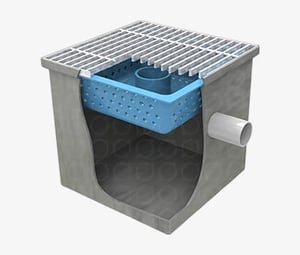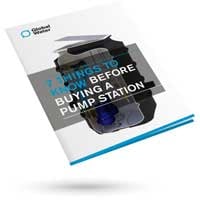Your guide to gross pollutant traps
Gross Pollutant Traps (GPT) are part of the stormwater treatment process in many development or redevelopment projects.
GPT act to remove gross pollutants from water and are combined with other tools to ensure water is treated before entering mains systems.
What are gross pollutants?
Gross pollutants are litter and debris greater than 5 millimetres in size. They can consist of anything from cigarette butts to plastic bags and chip wrappers. Not only can this debris contaminate our water source, it is a threat to wildlife and aquatic habitats, looks unpleasant and can smell and attract pests.
In order to filter these from our water systems, Gross Pollutant Traps removes these solids.

What is a gross pollutant trap?
A GPT is a device that removes solids greater than 5 millimetres from runoff water. There are several gross pollutant traps suitable for the urban landscape, including gully baskets, in-ground GPTs, trash racks and pipe nets.
What do gross pollutant traps do?
GPT’s main function is water quality control. All development projects and land use generate gross pollutants and these traps act to remove pollutants and coarse sediments. Generally, most GPTs remove pollutants and sediment, whilst some exclusively handle one or the other.
GPTs provide primary treatment within a water sensitive urban design – they do not provide flood control.
Different sizes of Gross Pollutant Traps
There are two different applications for GPTs, that is within a neighborhood or for regional catchment. This catchment system would involve a collection of smaller GPTs that filter runoff from several blocks.
These traps can operate in isolation to protect immediate downstream waters or can be used as part of a more comprehensive treatment system.
Through stormwater treatment trains, GPTs play a crucial role in maintaining the integrity of the downstream treatments (wetlands) by removing coarsest fraction of contaminants.
Legal Requirements for Gross Pollutant Trap installation
Before purchasing or installing a GPT, it’s crucial that you consider regulative (or council) requirements and seek approval. There may be planning regulations, building regulations or local health requirements that apply to GPTs in the area.
Development Act 1993
Local councils need to be contacted whether you are installing a GPT as part of a larger development, or retrofitting. They will outline what restrictions there are (if any).
Environment Protection Act 1993
The Environment Protection Act 1993 is responsible for ensuring reasonable and practical measures are in place to ensure that all activities on site, including during construction, do not pollute the environment or cause environmental harm.
As part of the Environmental Protection Act 1993 the following must be considered:
- Water Quality: This policy aims to ensure pollution from diffuse points or sources does not reduce the overall quality and promotes best practice in environmental management.
- Air Quality: It is important that dust generated by machinery, open stockpiling of soil or building materials are managed to ensure all dust generated does not influence the air quality.
- Waste: Waste arising from excavation and construction work must be stored, handled and disposed of according to requirements outlined in the Environmental Protection Act 1993.
- Odour: The maintenance of GPT systems must demonstrate captured contaminants can be stored so as not to cause significant environmental impact or nuisance.

Stormwater treatment seeks to achieve real, impactful and sustainable improvement in water quality. Global Water work with local communities to ensure flood protection, improved water quality management and the protection of ecosystems. Through working with local councils and consultants, Global Water’s knowledge of stormwater treatment and requirements ensures no stone is left unturned.
For more information on how Global Water can help you choose the right Gross Pollutant Trap, contact our team.
Tags: Stormwater




